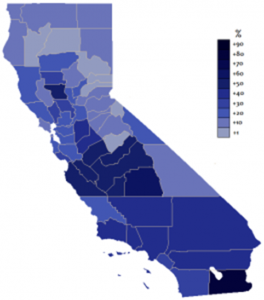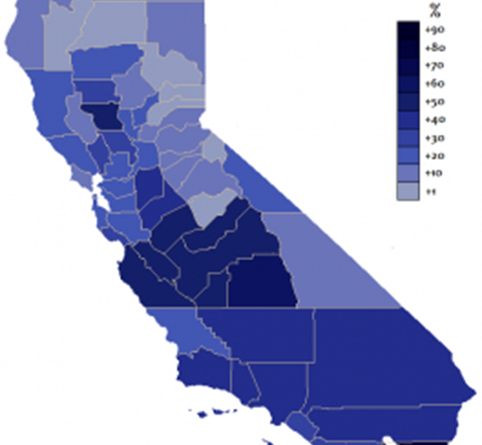The Mexican Diaspora
Mexican immigration is one of the more contemporary and urgent strands of global mass movement. The Mexican diaspora population is overwhelmingly based in the United States due to geographical proximity. Indeed, the second-largest Mexican diaspora population, in Canada, is substantially smaller than that in the United States. It is a very recent phenomenon, emerging in the early 20th Century and gaining traction in the 1960’s. It remains a major topic of debate in contemporary political arenas in both the United States and Mexico and is caused by a large number of reasons.
For many years, the Mexican-American borders were very transient as the emerging nations consolidated their territorial control. The Mexican-American Wars of the 19th Century saw the borders regularly change. This caused considerable population displacement and a large number of Spanish-speaking Mexicans settle in the Southwestern United States, particularly in California, New Mexico and Arizona. Indeed, following the resolution of the conflicts, ratified by the Gadsden Purchase of 1853, there were around 300,000 Mexican nationals living in the United States. Up until the beginning of the 20th Century, there were virtually no immigration restrictions, allowing easy Mexican immigration throughout the United States. Most early Mexican immigrants worked in labouring jobs, particularly in the agricultural and railroad industries.

Spanish language in California by county © Fobos92, Wikimedia Commons
The rates of immigration remained fairly steady for decades, exploding following the outbreak of the Mexican Revolution in 1910. One of the country’s most significant turning points, the national revolution caused widespread social and political change throughout the country as a violent leadership dispute emerged following the ousting of dictator Porfirio Diaz. Despite eventually ushering in a wealth of sociopolitical reforms, it caused considerable discord and subsequent violence and population displacement over the course of a decade. This resulted in a major wave of Mexican immigrants to relocate to the United States in the early 20th Century. The economic opportunities and relative political stability of the US provided a major draw. This, in combination with the lax immigration laws applying to Mexicans, saw a major community grow in the United States.
This growth was brought to a halt with the devastating impact of the Great Depression in 1929. This caused the special immigration allowances for Mexican immigrants to abruptly conclude. The economic distress in the United States coalesced with an emerging anti-immigration sentiment, which saw large numbers of Mexicans repatriated and new barriers erected on the border. Rates fell by 95% between 1929 and 1931. These sentiments continued until the outbreak of the Second World War, which caused a significant shortage of labour in the United States. The establishment of the Bracero Program saw millions of Mexican labourers recruited to work in the United States under low wages and poor conditions. These immigrants were virtually deprived of any civil rights.
In the aftermath of the Second World War and the dissolution of the Bracero Program, illegal Mexican immigration rose and this contributed to intense anti-immigration measures from the US government. Despite these restrictions’ intentions, they have had the opposite effect, increasing illegal immigration. In modern times, Mexico has the largest number of emigrants in the world. Mexicans continue to settle overwhelmingly in the United States due to its proximity and the widespread, large Mexican communities dotted throughout the country. Despite these large numbers, the rates have slowed and even reversed in recent years. This is a result of a number of factors. The economic crisis of 2008 caused job opportunities to decline, thereby removing additional immigration incentive. Further opportunities in Mexico have also emerged in recent years. Despite this, Mexico is still plagued by a number of issues, most notably the violence resulting from drug cartels, which encourages, amongst other reasons, emigration.
Despite the recurring tensions between Mexicans and Americans, the community’s cultural and economic community to the United States is massive and undeniable. Hispanic Americans (of which Mexicans form a large majority) account for over half of the United States’ labour workforce. The Mexican diaspora’s story is inextricably tied to the United States, and in spite of these tensions, has formed a vital role in the country’s cultural and economic fabric.
main image: Man With His Daughter – Pinata Dist., Joey Zanotti, Flickr Creative Commons




